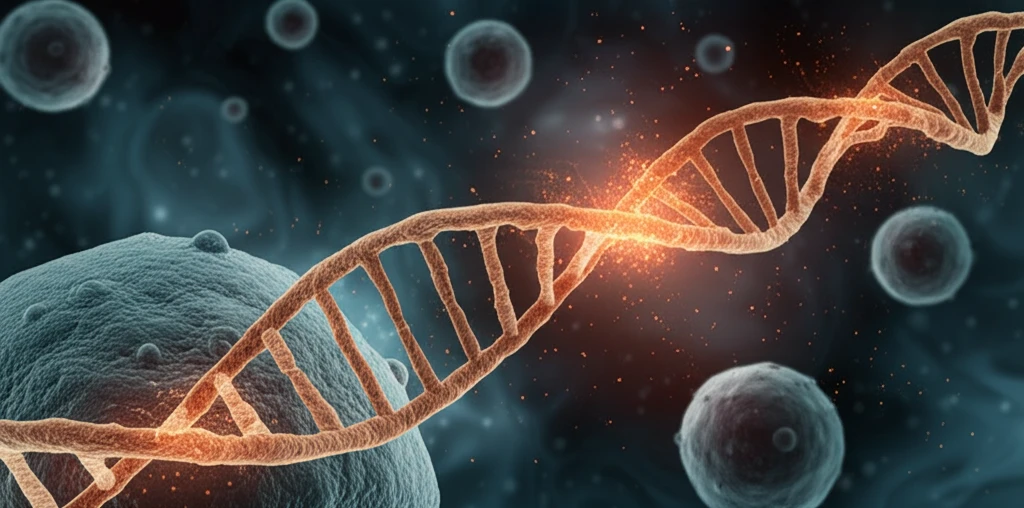
Unlocking Osteosarcoma: How GClnc1 Impacts Tumor Growth
"Discover how the long non-coding RNA GClnc1 influences osteosarcoma development by suppressing p53 signaling, offering new insights into potential cancer treatments."
Osteosarcoma (OS), a malignant bone tumor primarily affecting children and adolescents, remains a significant challenge due to its high recurrence and metastasis rates, which leads to poor prognosis. Current therapeutic strategies often fall short, underscoring the urgent need for innovative approaches. Unlocking the molecular mechanisms driving OS pathogenicity is crucial for developing effective prevention and treatment strategies.
Long non-coding RNAs (lncRNAs), which are RNA molecules exceeding 200 nucleotides without protein-coding potential, have emerged as key players in cancer development. In osteosarcoma, lncRNAs like DANCR and FOXP4-AS1 have been implicated in promoting tumor progression. However, the full spectrum of lncRNAs involved in OS remains largely unexplored, indicating a need for further investigation.
This article delves into the role of GClnc1, an lncRNA previously identified as an oncogene in gastric cancer, within the context of osteosarcoma. Recent research highlights its potential significance in OS development. The study aims to elucidate GClnc1's functions in OS, offering insights that could pave the way for new therapeutic interventions.
GClnc1's Role in Osteosarcoma: Growth, Progression, and Prognosis

The study reveals a significant correlation between GClnc1 expression and osteosarcoma progression. GClnc1 mRNA levels are markedly higher in tumor tissues compared to adjacent non-tumor tissues in OS patients. This elevated expression is associated with poor prognosis, larger tumor size, and advanced TNM stage, suggesting a critical role for GClnc1 in OS development.
- Cell Proliferation: Knockdown of GClnc1 suppressed the proliferation and colony formation of OS cells. Conversely, enforced expression of GClnc1 enhanced these processes.
- Tumor Growth: In vivo studies demonstrated that GClnc1 expression significantly increased subcutaneous tumor growth in mice, underscoring its oncogenic potential.
- Normal Bone Cell Line: GClnc1 expression was tested in normal bone cell line (hFOB1.19), it was found that expression levels of GClnc1 are upregulated in OS cell lines than that of normal bone cell line.
Unraveling the Mechanisms: GClnc1 and the p53 Pathway
The study identifies GClnc1 as a key player in the p53-regulating network, acting as an oncogene in osteosarcoma. The discovery contributes to a more comprehensive understanding of the p53 pathway, and the identification of GClnc1 as a potential prognostic marker for OS could guide the development of new treatment strategies, potentially improving outcomes for individuals with this aggressive bone cancer. Future studies focusing on factors influencing GClnc1 expression or GClnc1-p53 binding may lead to innovative therapies for OS.
